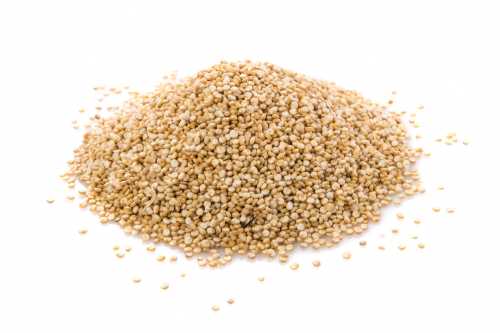If you are a diabetic and like to eat quinoa then you are wondering if it is good for you especially if you just got diagnosed with diabetes.
As a diabetic, you are quite limited when it comes to food choices. Due to this condition, you would have to become very picky when it comes to choosing what food to eat. This at times can be very frustrating because there could be instances when you face challenges getting what you must eat.
If you have been taking quinoa all of your life, it will be very difficult to stop taking it even after being diagnosed with such a condition. The most important thing now is to know whether quinoa is good or bad for diabetics.
We will therefore explore this question by getting to know about the types of sugars present in quinoa, their amount, whether they increase the sugar levels, and many other important things about quinoa. By knowing all these, you will appreciate whether quinoa is good for diabetes or not.
What is Quinoa
Quinoa (Chenopodium quinoa) is an annual plant cultivated mainly for its seeds. Originating from Peru, it is widely used as a substitute for rice. Quinoa is related to beets, chard, and spinach.
Quinoa seeds are highly rich in fiber, protein and are gluten-free. This makes quinoa good for people who are sensitive to gluten. It is quantified as a pseudo-cereal which is a term used to describe foods that are made or prepared and eaten as a whole grain.
Quinoa is a dicotyledonous annual plant. The plant is widespread and now available in many countries including Kenya, India, many European countries, and the United States.
Is quinoa good for diabetes?
Quinoa has been found to be good for people living with diabetes. This was established after determining the glycemic index and glycemic load of the plant. You should therefore know that taking quinoa as a diabetic isn’t a problem and you can consume it without fear.
Let’s take a look at what the two factors mentioned above that make it good for diabetics really are and why we say quinoa is good for diabetes.
Glycemic index of quinoa
Glycemic index is a numerical scale of numbers between 0 and 100 which is used to describe how eating one food will raise blood sugar levels.
There are 3 categories of the glycemic index namely low, medium and high. The lower the glycemic index of a food, the lower the chances of the food affecting your blood sugar levels, the higher the glycemic index of a food, the greater the chances of the food affecting your blood sugar levels.
- The low glycemic index ranges from 0 to 55
- The medium glycemic index ranges from 56 to 69
- The high glycemic category ranges from 70 to 100
Quinoa has a glycemic load of 53, placing it in the low glycemic index category. This factor indicates that quinoa is safe to be consumed by people with diabetes.
Glycemic load of quinoa
A glycemic load is a tool used to measure the amount of carbohydrate in a portion of food together with how quickly it increases blood glucose levels. It is very helpful to people with diabetes. This tool helps them to assess which quantities of foods are most suitable for maintaining good blood glucose levels.
The classification of glycemic load is as follows:
- Low: 0 to 10
- Medium: 11 to 19
- High: 20 and above
Quinoa has a glycemic load of quinoa is 10.7, placing it in the low classification of the glycemic load. This means that one serving of quinoa will only release a small amount of the overall carbohydrate content which is available. Hence, quinoa is good for diabetes.
Is quinoa good for type 1 diabetes?
Type 1 diabetes is a type of diabetes that requires a daily dose of insulin. Caused as a result of insufficient insulin production in the body. This type of diabetes can cause too much excretion of urine, thirst, constant hunger, weight loss, vision changes, and fatigue.
Quinoa contains essential amino acids which encourage the production of insulin, thus, making quinoa good for type 1 diabetes.
Is quinoa good for type 2 diabetes?
Type 2 diabetes is a type of diabetes that results from the body’s inadequate use of insulin. Excess body weight (obesity) and physical inactivity can be caused by this type of diabetes.
Quinoa is a great fiber source that does not impact blood sugar that could help you maintain proper body weight to prevent other chronic conditions associated with diabetes (such as obesity). This makes quinoa good for people with type 2 diabetes.
Is quinoa good for gestational diabetes?
A type of diabetes that develops during pregnancy and usually disappears after giving birth. It can happen at any stage of pregnancy but is more common in the second or third trimester.
Pregnant women or women with gestational diabetes face an increased risk of complications during pregnancy and at delivery. These women and their children are also at increased risk of type 2 diabetes in the future.
Quinoa has a low glycemic index and load which makes it good for gestational diabetes. Quinoa is highly nutritious and good for regulating gestational diabetes.
What nutrients can diabetics get from eating quinoa?
Quinoa is highly nutritional food. Diabetics can get nutrients such as
- protein
- fiber
- folate
- manganese
- phosphorous
- vitamin B1 etc.
What other health benefits can diabetics get from quinoa?
Apart from being a safe food for diabetics, quinoa has other health benefits that can improve the overall health of diabetics. Some of these health benefits include:
Quinoa is good for lowering cholesterol
With its rich fiber content, quinoa can aid in reducing cholesterol levels. Fiber helps in digestion which requires bile acids, which are made partly with cholesterol.
As your digestion improves, the liver pulls cholesterol from the blood to create more bile acid, thereby reducing the amount of bad cholesterol.
Quinoa improves heart health
A study published in the Journal of Food Lipids noted that quinoa seeds possess many of the dietary flavonoids shown to inversely correlate with mortality from heart disease.
Quinoa is Gluten-free
Another health benefit of quinoa is that it is gluten-free. Gluten provides no essential nutrients and this is absent in quinoa. Gluten can cause abdominal pain, anemia, anxiety, fatigue, etc. when in excess in the human body.
If you are a diabetic and also sensitive to gluten, then you have found a good food that will help serve both purposes.
How to prepare quinoa for diabetics
Quinoa is prepared in water and cooked in a similar way to rice.
- When preparing quinoa, place one cup of uncooked quinoa and 2 cups of water into a saucepan and bring it to a boil.
- Once the water is boiling reduce the heat and simmer the quinoa until most of the water has been absorbed and the quinoa is tender
- This usually takes about 15 to 20 minutes in most cases.
Does quinoa have any side effects for diabetics who eat it?
Quinoa seeds are coated with saponins, chemicals made to protect the plant from diseases caused by fungi, bacteria, and viruses.
If quinoa is not rinsed properly, the saponins can cause stomach irritation when ingested. A serious side effect that saponins can cause is damage to your small intestine.






Leave a Comment